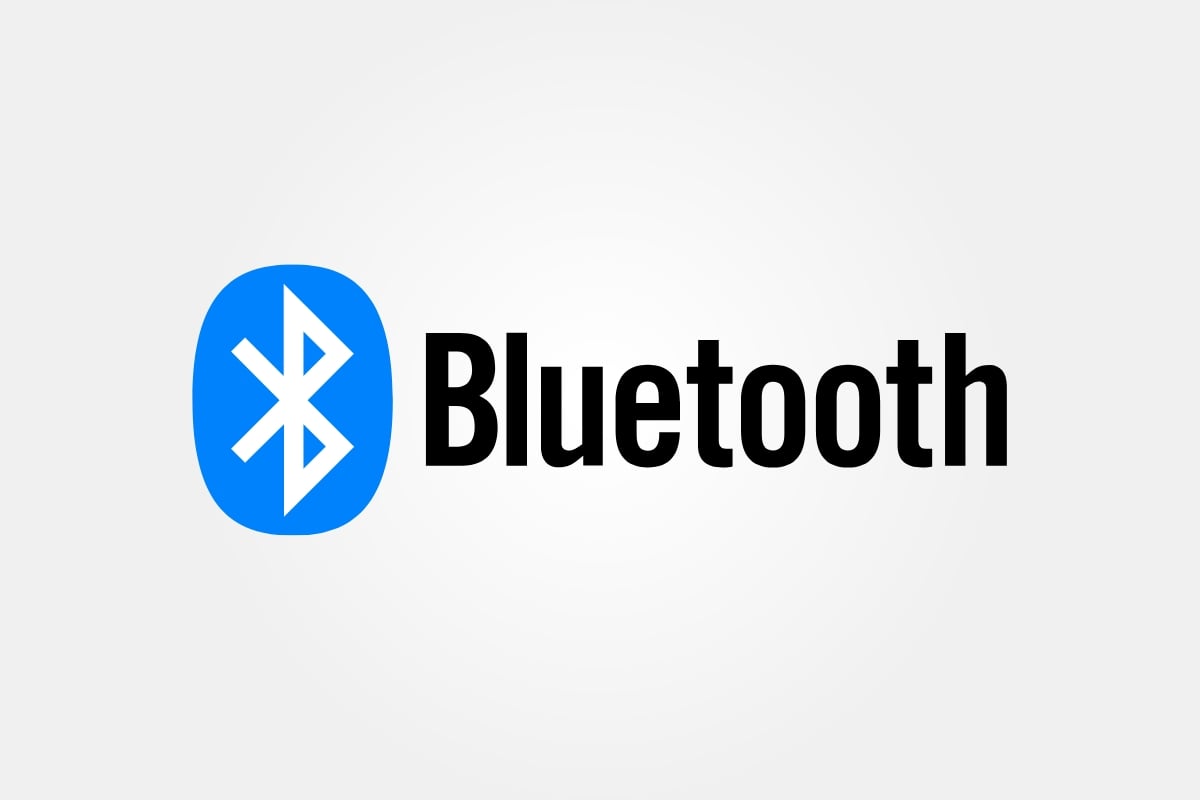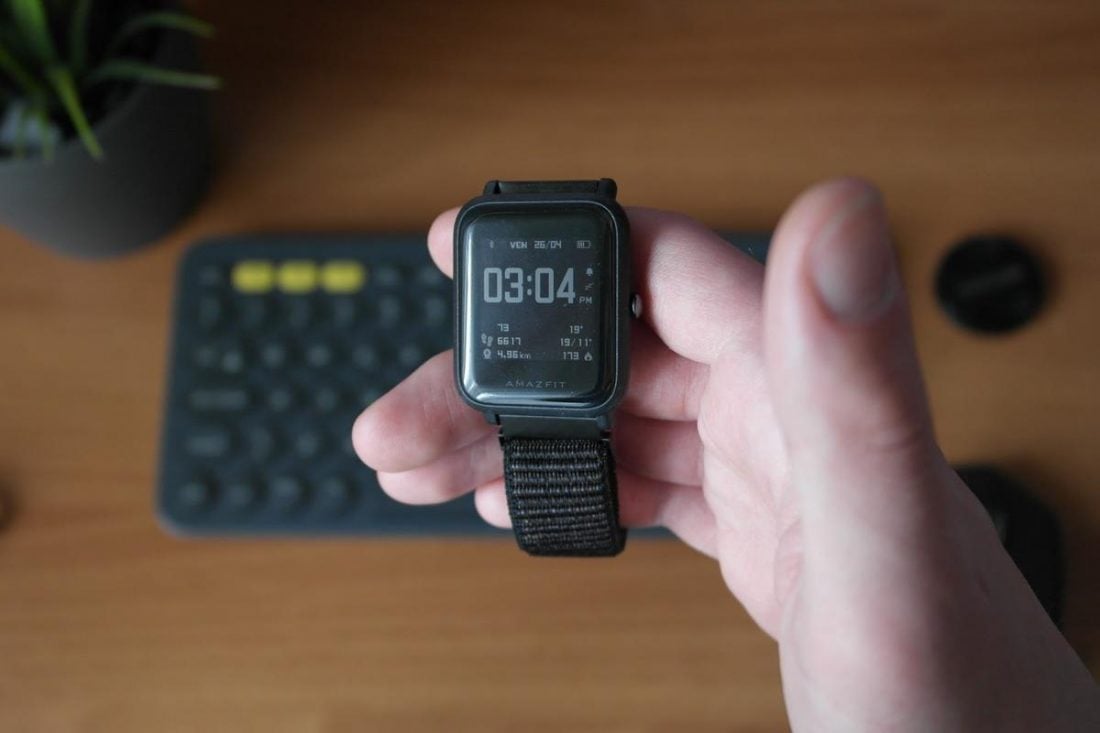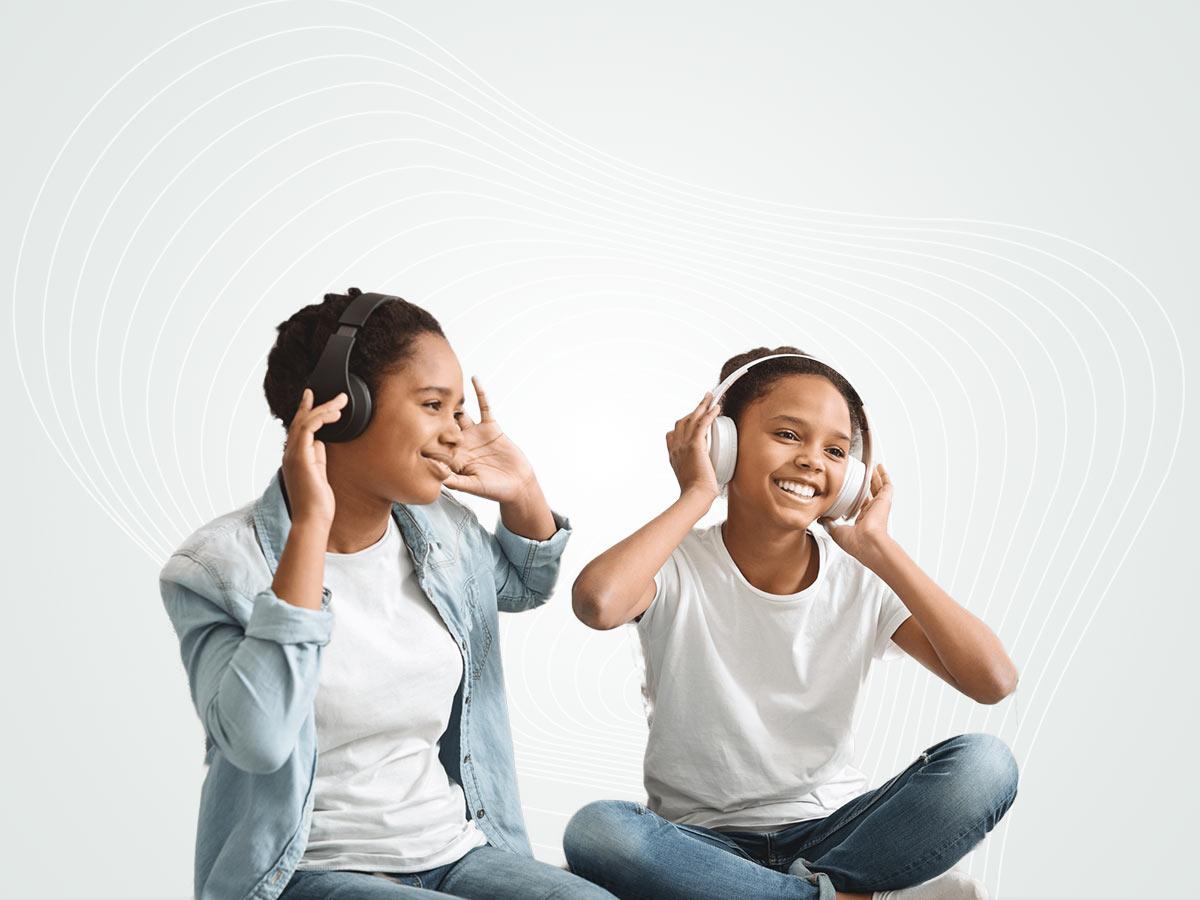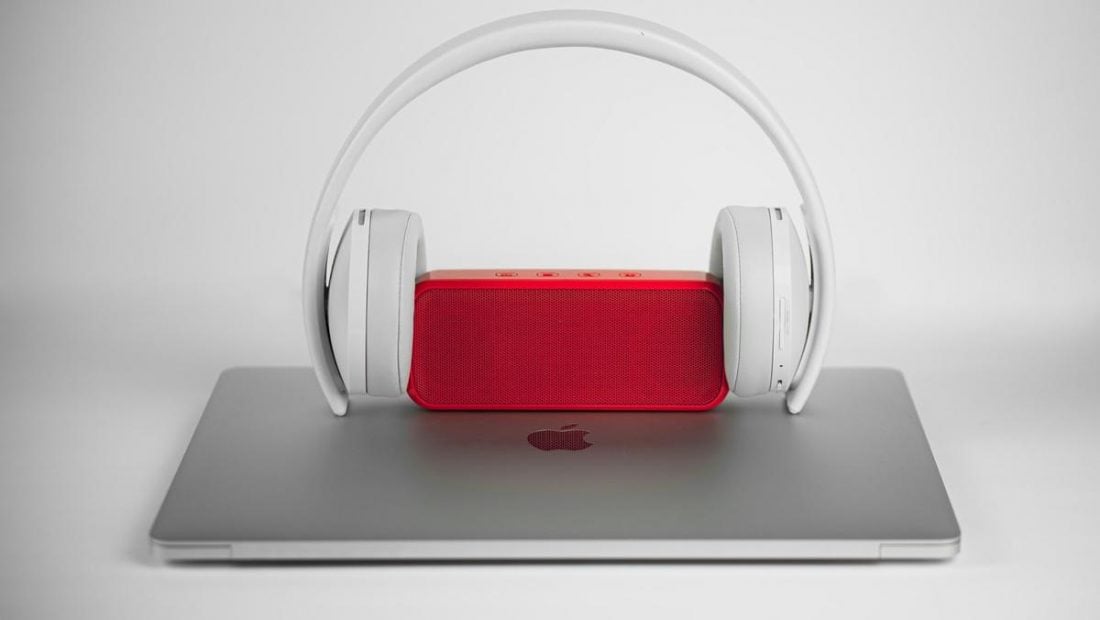A closer look at the different Bluetooth versions, how they’ve changed, and how they affect your wireless listening experience.
Bluetooth allows devices to communicate wirelessly. And while this primary function has remained the same, the technology has witnessed many enhancements. Bluetooth 5.0 alone has three new versions that were launched between 2019 and 2021!
For this reason, keeping track of what each Bluetooth version brings can be challenging, especially when looking to upgrade your device.
So, if you’re asking yourself whether going for the latest Bluetooth version is worth it, we’ve got you covered. This guide will break down the essential changes in each Bluetooth version. We’ll also discuss related factors affecting your headphones’ sound quality and performance, so keep reading until the end!
The Different Bluetooth Versions: Which Should You Choose?

If you’re wondering whether you should upgrade to a pair of headphones with the newest Bluetooth version, remember this:
All Bluetooth versions are backward-compatible and can work with lower Bluetooth protocols.
So you don’t need to worry about your new headphones not working with an older phone.
Still, it doesn’t hurt to learn about all the changes in the different Bluetooth versions, especially if you’re mulling over which one is the best for the devices you have.
For a better idea of how each Bluetooth version stacks up, refer to the table below:
| Factors | Bluetooth 1 | Bluetooth 2 | Bluetooth 3 | Bluetooth 4 | Bluetooth 5 |
|---|---|---|---|---|---|
| Speed | 732.2 kb/s to 1 Mbps | 2.1 Mbps Enhanced Data Rate (EDR) | 24 Mbps (via Wi-Fi) | 1 Mbps (LE) 25 Mbps (EDR) | 2 Mbps (LE) 50 Mbps (EDR) |
| Range | 10 meters (33 feet) | 30 meters (100 feet) | 30 meters (100 feet) | 60 meters (200 feet) | 240 meters (800 feet) |
| Compatibility | N/A | OK for any phone, but expect some possible sound sync issues | OK for any phone | Good for any phone but best for models with the same Bluetooth version | Good for any phone but best for newer phone models |
| Power requirement | High | High | High | Mid-high | Low |
| Reliability | Low | Low | Low | Mid-high | High |
Speed
Transfer speeds for Bluetooth 1 were understandably slow. But thanks to the addition of Enhanced Data Rate (EDR), Bluetooth speeds improved in the later versions.
Currently, the speed difference between Bluetooth 4.0 and 5 is a no-brainer.
The former has a maximum speed of 25 Mbps, whereas the latter doubles that to 50 Mbps with EDR. This higher bandwidth allows faster data sharing, less lag, and quicker response times between devices. As for their Low Energy transmission rates, Bluetooth 4.0 and 5 max out at 1 and 2 Mbps, respectively.
Range
Operating range is another factor that has seen significant improvements. Earlier Bluetooth versions worked within a range of 10-30 meters. As such, they were best for short-range data transfers.
However, this range increased dramatically with Bluetooth 4.0 and 5. The former goes up to 60 meters (10 meters indoors), while the latter maintains connections up to 240 meters (40 meters indoors). This increased connection range is ideal for wireless headphones as it lets you enjoy your music farther away from an audio source with fewer audio dropouts.
Compatibility
As mentioned earlier, Bluetooth 5 is backward-compatible with lower Bluetooth versions, meaning you can easily use Bluetooth 4.2 headphones with a 5.0 phone. The downside is that you can only fully utilize the Bluetooth features of the device with the lower version.
Similarly, you can only use Bluetooth 5 features if both devices run that version.
An example of these features is Dual Audio. It allows you to connect two pairs of headphones to a single phone or play music from one phone on two different speakers. Unfortunately, Dual Audio is limited to Bluetooth 5 devices. As such, you can’t use this feature when paired with a Bluetooth 4.2 device.
If your audio device only supports 4.2, it’s still practical to go for headphones with the same version. Doing so helps you save money, especially if you don’t intend to upgrade your devices anytime soon.
On the other hand, if you want to make the most of your 5.0 phone’s features, it’s best to upgrade your peripherals to Bluetooth 5.
Power requirement
Earlier Bluetooth versions were big power consumers simply because they were always “on.” As one would expect, this didn’t bode well for battery life. And this was especially true for Bluetooth 3, as it was the first to provide high-speed data transfers.
Everything changed with the introduction of Bluetooth Low Energy. The new technology comes with several low-power and sleep modes. As such, it’s possible for smaller devices to save power by going to sleep and waking up as needed.
Despite these changes, Bluetooth 4’s performance still falls in the mid-high range.
Bluetooth 5 further improved this by boosting its data transmission rate and range. As a result, devices require even less power to send and receive data, thus prolonging battery life.
Reliability
Earlier Bluetooth versions had a shorter range and less stringent encryption protocols, which posed safety and reliability issues in congested settings.
However, reliability became better with the newer Bluetooth versions. For example, Bluetooth 4’s lower message capacity of 37 octets increased to 255 in Bluetooth 5. As such, this resulted in more efficient data transmission and less broadcast time.
Additionally, signal reliability improved due to adaptive frequency hopping (AFH) and Slot Availability Mask (SAM).
AFH allows the primary Bluetooth device to map out working and non-working channels, while SAM determines when an LTE channel is busy transmitting data.
Together, they help Bluetooth devices avoid faulty channels. They also lessen signal interference and speed up data transmission, which is ideal for congested industrial environments.
Evolution of Bluetooth Through the Years
Before we get into the specifics of the more current Bluetooth versions, here’s a little Bluetooth history:
The name “Bluetooth” originated from King Harald “Blåtand” Gormsson, a Danish ruler, because of a single rotting tooth in his mouth that was bluish-gray. According to the founders of Bluetooth SIG, the name was supposed to be temporary until the team could think of something “cooler.”
Here’s a quick look at the different Bluetooth versions throughout the years:
- Bluetooth 1.0-1.2 (1999)
- Bluetooth 2.0-2.1 (2005)
- Bluetooth 3.0 (2009)
- Bluetooth 4.0-4.2 (2010)
- Bluetooth 5.0-5.3 (2016-present)
Bluetooth 1.0-1.2 (1999)
The purpose of creating Bluetooth was to enable wireless communication between various devices. It was also meant to replace older connectors, like the RS-232 computer serial port, which linked up PC peripherals like modems and printers.
Over the next few years, Bluetooth 1.2 became integrated into devices like hands-free headsets, mobile phones, and laptops.
Main features
Bluetooth 1.0a and 1.0b featured peak data transfer speeds of around 732.2 kb/s, with a connection range of 10m or 33ft. Version 1.2 improved this by increasing the data transfer speed to 1 Mbps. Other enhancements include:
- Quicker device discoverability and pairing.
- Implemented Extended Synchronous Connections (eSCO) for improved voice quality.
Drawbacks
Despite the improvements, Bluetooth 1.2 didn’t have enough bandwidth to transmit high-quality audio. It was also prone to security issues and high power consumption.
Bluetooth 1.0 vs. 1.1 vs. 1.2
| Version | Date of release | Range | Transmission Rate | Main development |
|---|---|---|---|---|
| Bluetooth 1.0 | July 1999 | 10 m (33 ft) | 732.2 kbit/s | Provided the first Bluetooth specifications. |
| Bluetooth 1.1 | February 2001 | 10 m (33 ft) | 732.2 kbit/s | Improved encryption, device discoverability, and pairing. |
| Bluetooth 1.2 | November 2003 | 10 m (33 ft) | 1 Mbps | Added Extended Synchronous Connections (eSCO) and Adaptive Frequency Hopping (AFH). |
Bluetooth 2.0-2.1 (2005)
The arrival of Bluetooth 2.0 marked a period of significant growth. At this point, Bluetooth technology was becoming a standard in consumer products and a common feature in people’s daily lives, as evidenced by the increased global demand for Bluetooth-enabled devices.
Main features
The most notable improvement in version 2.0 was Enhanced Data Rate (EDR). This feature increased the data transfer rate up to 2.1 Mbps. Other enhancements include:
- Increased connection range of 30 meters or 100 feet.
- Lower power consumption than Bluetooth 1 and longer battery life for wireless devices.
- Improved security with a new pairing system called SSP (Secure Simple Pairing).
Drawbacks
SBC was the only standard codec used by devices at the time. And as a result, the sound quality in Bluetooth 2.0 devices remained mediocre. Known for its subpar digital file compressions, SBC yields poor sound quality and is prone to audio delays.
Bluetooth 2.0 vs. 2.1
| Version | Date of release | Range | Transmission Rate | Main development |
|---|---|---|---|---|
| Bluetooth 2.0 | November 2004 | 30 m (100 ft) | 2.1 Mbps | Increased transfer rate with Enhanced Data Rate (EDR). |
| Bluetooth 2.1 | August 2007 | 30 m (100 ft) | 2.1 Mbps | Added Simple Secure Pairing (SSP) and Near Field Communication (NFC) support. |
Bluetooth 3.0 (2009)
Bluetooth 3.0 + HS (High Speed) uses the power of Wi-Fi, allowing faster transfer speeds. As such, it transmits larger amounts of audio and video data, making it one of the most common Bluetooth versions for headphones, speakers, and portable media players.
Main features
One of the most significant changes in Bluetooth 3.0 is its ability to transfer data over Wi-Fi. It does this at speeds ranging from 800 kb/s to 24 Mbps. However, higher rates are rarely seen for headphones as these require more power.
Other Bluetooth 3.0 enhancements include:
- L2CAP Enhanced modes and alternative MAC and PHYs for transferring large digital files.
- Enhanced Power Control lets wireless devices adjust power levels as needed and helps maintain a good Bluetooth connection.
- Unicast Connectionless Data facilitated the quick transfer of smaller amounts of data.
Drawbacks
The downside of Bluetooth 3.0 is its high power consumption, which quickly drains the batteries of Bluetooth-enabled devices.
Bluetooth 4.0-4.2 (2010)

Like the previous versions, Bluetooth 4.0 has high transfer rates of up to 25 Mbps. However, this version also ushered in a low-power specification called Bluetooth Low Energy (BLE) or Bluetooth Smart.
This new specification has a transmission rate of only 1 Mbps, making it ideal for smaller IoT (Internet of Things) devices like fitness trackers, hearing aids, and other wearables. With Bluetooth LE, these devices stay paired longer using less power.
Additionally, Bluetooth Smart Ready turns primary devices like laptops, tablets, and smartphones into connection hubs. Doing this allows them to send and receive data from smart devices.
Main features
Aside from power consumption, Bluetooth 4.0 has improved audio data transmission with aptX codec support. This enables manufacturers and developers to take advantage of the codec’s higher bitrate and efficient lossy compression algorithm.
Other enhancements include:
- Increased connection range to 60m or 200ft.
- Less interference between Bluetooth and 4G/LTE signals.
- Improved pairing and re-pairing of devices.
- Increased packet capacity and data range for IoT devices.
- Improved data transmission with Adaptive Frequency Hopping (AFH).
Drawbacks
Smart Ready devices can easily pair with devices using older Bluetooth models. However, they’re best used with other Smart Ready devices to benefit from the new energy-saving feature of BLE.
Bluetooth 4.0 vs. 4.1 vs. 4.2
| Version | Date of release | Range | Transmission Rate | Main development |
|---|---|---|---|---|
| Bluetooth 4.0 | December 2009 | 60 m (200 ft) | 1 Mbps (LE) 24 Mbps (EDR) | Introduced Bluetooth SMART (Low Energy) and SMART Ready. Low operation and standby power requirement for IoT devices. |
| Bluetooth 4.1 | December 2013 | 60 m (200 ft) | 1 Mbps (LE) 25 Mbps (EDR) | Allowed IoT devices to simultaneously act as a Bluetooth LE hub and peripheral. Added a dedicated channel for IPv6. Improved coexistence with 4G signals. AES encryption technology for secure connections. |
| Bluetooth 4.2 | December 2014 | 60 m (200 ft) | 1 Mbps (LE) 25 Mbps (EDR) | Added Internet Protocol Support Profile (IPSP) that further improves IoT and IPv6 connectivity. |
Bluetooth 5-5.3 (2016- present)
The latest Bluetooth version, Bluetooth 5, was released in July 2016. Many of its enhancements focus on providing a better operational framework for IoT devices.
Main features
Bluetooth 5 provides different data transfer rates depending on a device’s transmission range. These rates range from 125 kbps to 2 Mbps. It also extends the connection range to as much as 240 meters.
Moreover, the 5.2 version introduced the new Low Complexity Communication Codec (LC3), which transfers audio data at lower bitrates without sacrificing audio quality. Similar to Bluetooth 4.0 and aptX, not all devices using Bluetooth 5.2 or 5.3 will have this codec.
For instance, the AirPods Pro 2 use Bluetooth 5.3 but do not support high-definition codecs like aptX and LDAC, much less LC3. However, since there’s built-in support for this codec, manufacturers have the option to add it.
Other notable improvements include:
- Less power consumption.
- Increased message capacity.
- Backward compatibility with Bluetooth 4 versions.
- A Dual Audio feature that lets you connect to two devices simultaneously.
- Addition of Slot Availability Mask (SAM) that lessens interference with LTE.
Drawbacks
Bluetooth 5 offers five security-enhancing features. Yet, no wireless technology is entirely impervious to risks. Despite the improvements, Bluetooth 5 still faces vulnerabilities like bluesnarfing.
Moreover, since data transmission rates and operating range have doubled and quadrupled, it’s possible to hack devices from farther distances and download more data in less time. This is risky because Bluetooth 5 only uses device authentication, not user authentication.
Bluetooth 5.0 vs. 5.1 vs. 5.2 vs. 5.3
| Version | Date of release | Range | Transmission Rate | Main development |
|---|---|---|---|---|
| Bluetooth 5 | July 2016 | 240 m (800 ft) | 2 Mbps (LE) 50 Mbps | New LE 2M PHY for faster data rate and lower power consumption. Improved IoT connectivity. Introduced Dual Audio. Added Slot Availability Mask (SAM) for better coexistence with LTE signals. |
| Bluetooth 5.1 | January 2019 | 240 m (800 ft) | 2 Mbps (LE) 50 Mbps | Enhanced directional accuracy indoors with Angle of Arrival (AoA), Angle of Departure (AoD), and RSSI info. |
| Bluetooth 5.2 | December 2019 | 240 m (800 ft) | 2 Mbps (LE) 50 Mbps | Added LE Audio and LC3 Bluetooth codec support. Improved Enhanced Attribute Protocol (EATT) for multiple simultaneous transactions between a transmitter and receiver. |
| Bluetooth 5.3 | July 2021 | 240 m (800 ft) | 2 Mbps (LE) 50 Mbps | Enhanced Periodic Advertising. Introduced Connection Subrating. Enhanced Channel Classification. Improved Encryption Key Size Control Enhancements. |
Bluetooth Classic vs. Bluetooth Low Energy
Bluetooth versions fall under Bluetooth Classic and Bluetooth Low Energy (LE). The former refers to versions 1.0 to 3.0, while the latter makes up versions 4.0 to the latest Bluetooth version.
As mentioned, devices needing continuous, short-range data and audio streaming use Bluetooth Classic. This version of Bluetooth is standard in devices like wireless printers, keyboards, speakers, and in-car entertainment systems.
Similarly, Bluetooth Low Energy (LE) powers a range of computer peripherals and audio devices. But due to its low power usage, it’s ideal for IoT devices like fitness monitors, smart watches, and the like.
Bluetooth 5.3: Is It Worth the Upgrade?
Released in July 2021, the latest iteration of Bluetooth 5 features enhancements that improve the efficiency of how data is processed and strengthen connectivity in general, particularly in the IoT framework.
Here are some of the critical developments that Bluetooth 5.3 offers:
- Enhanced periodic advertising
- Connection subrating
- Enhanced channel classification
- Encryption key size control enhancements
Enhanced periodic advertising
Transmitting Bluetooth devices send multiple identical data packets in quick succession to improve their chances of being received.
With Enhanced Periodic Advertising, receiving devices can immediately identify and discard duplicates.
As a result, less time and power spent processing redundant data translates into longer battery life for peripheral devices like headphones.
Connection subrating
This new feature improves the user experience by letting devices quickly switch between low and high power cycles.
For example, if you’re using a pair of earbuds for their active noise-canceling feature, they’ll default to a low-duty cycle. On the other hand, they’ll shift to a heavy-duty cycle if you suddenly get a call or decide to play music. In the long run, this feature helps wireless peripherals conserve power.
Enhanced channel classification
When a peripheral device connects to a central device (like your smartphone and wireless headphones), the latter performs channel classification to determine the best channel to use.
Unfortunately, this process isn’t infallible and can result in mismatches or interference, especially when both devices are far apart.
With Enhanced Channel Classification, transmitting and receiving devices can classify channels and decide on the best ones to use.
In other words, your wireless headphones and smartphone can determine which channels to use together. This reduces the occurrence of mismatches, resulting in more robust and reliable connections.
Encryption key size control enhancements
Encryption is a method used to safeguard data transmitted between two Bluetooth devices. The level of protection depends on the length of the encryption key used, which is determined by both devices’ controllers when establishing connections.
With the new Host Controller Interface (HCI) command, developers can specify a minimum encryption key length, improving overall protection and efficiency.
This makes it harder to hack Bluetooth IoT devices like headphones, hearing aids, door locks, security cameras, and personal medical devices.
The Future of Bluetooth: What to Expect
Bluetooth SIG is continuously reimagining Bluetooth technology. It will not be an exaggeration to state that this version remains the most in-demand wireless technology for IoT devices worldwide.
Their newest specification, LE Audio, is clearly in line with this. Completed in July 2022, LE Audio brings several new features to the table for Bluetooth 5.2 devices and pushes the boundaries of interconnectedness in commercial, consumer, and industrial sectors.
These new features include the following:
- Auracast broadcast audio
- Assistive listening
- LC3 audio codec
- Multi-stream
- Other Bluetooth specs in development
Auracast broadcast audio
This feature allows an Auracast transmitter to broadcast audio to multiple Bluetooth receivers. The Auracast Assistant on your phone or hearing aid remote then scans and displays available audio broadcasts in the area. It’s similar to the way we access public Wi-Fi spots.
With this function, you can connect to audio broadcasts in public spaces. For example, you can connect to an airport’s PA system to better hear important announcements. Aside from this, Auracast also lets you share audio with other people’s devices.
Assistive listening
Auracast also optimizes assistive listening for people with hearing problems. As described above, Auracast-enabled hearing aids can receive higher-quality audio from an audio source.
For instance, if you’re in an “acoustically challenging” environment like a large conference center, you can pair your hearing aid straight to an Auracast transmitter for better audio accessibility.
LC3 audio codec
This new codec delivers higher audio quality to wireless audio devices. And it does this at 50% of the bitrate of the older SBC codec.
The smaller bitrate means LC3 needs less bandwidth to transfer larger amounts of data, resulting in less power consumption. This, in turn, is excellent news for your device’s battery life and gives manufacturers the option to create products with smaller batteries and slimmer form factors.
In addition to consuming less power, it also has improved latency. This works great for users of true wireless (TWS) headphones and those who use hearing aids. Reduced latency means sound reaches you at the same rate as those with normal hearing.
Multi-stream

Multi-Stream allows devices to maintain multiple and independent simultaneous connections. It enables you to switch seamlessly between different audio sources. According to Bluetooth SIG, this optimizes the performance of TWS earbuds.
For example, with the typical multipoint setup, TWS earbuds connect via a single audio stream. The first earbud connects to the audio source, while the second earbud connects to the first. With Multi-Stream, both earbuds can connect to the audio source, giving you a “better stereo imaging experience.”
With the energy-saving and high-performance qualities of Bluetooth 5, improved Location Services, faster data transfer rates, and Bluetooth Mesh, we’re looking at a bright, fully-connected future.
Other Bluetooth specs in development
In addition to the rollout of new features like LE Audio and the LC3 codec, Bluetooth SIG has other developments in the works. These include:
- Higher 6GHz frequency band: Bluetooth SIG is working on a new specification for Bluetooth LE that focuses on expanding into the 6 GHz frequency band. By “designating 6 GHz for unlicensed use”, Bluetooth devices will no longer be limited to the 2.4 GHz frequency band, thus addressing any potential congestion issues in the future.
- Higher Data Rate: As mentioned in this table, the new LE 2M PHY configuration improved data speeds and power consumption of Bluetooth 5. However, Bluetooth SIG recognizes the greater need for even higher rates to accommodate “streaming larger media” and make way for performance improvements in IoT devices. As such, the Higher Data Throughput project addresses these concerns.
Other Factors That Contribute to Bluetooth Performance

Aside from the different versions, other Bluetooth factors also affect your headphones’ performance. Here’s a quick discussion on them:
Bluetooth profile
Bluetooth profiles are a set of specifications or rules that determine how a device functions. You can delegate many tasks to your wireless headphones, including making and receiving calls or controlling music playback. These tasks use specific Bluetooth profiles to function correctly. So, it’s necessary to understand what each profile does.
Here’s a quick run-through of the profiles:
- HFP (Hands-Free Profile): Allows headphones to make calls and utilize phone features like number redialing, call waiting, and voice dialing.
- HSP (Headset Profile): Permits users to make and receive calls, hang up, and adjust the voice volume via their headphones.
- A2DP (Advanced Audio Distribution Profile): Allows users to stream audio from one device to another. For example, a smartphone to a headset, a smartphone to a car stereo, or a microphone to a computer.
- AVRCP (Audio/Video Remote Control Profile): Enables users to use their headphones as a remote control for media playback. This profile lets you pause/play/stop playback and skip tracks.
- PBAB (Phone Book Access Profile): Allows headphones to access the user’s phone contacts for its Caller Announce feature.
Bluetooth class
Bluetooth classes indicate a Bluetooth device’s power output and wireless range. A higher power output means a more extended range.
Class 1 and 2 Bluetooth devices typically include laptops and computers. On the other hand, other smaller mobile devices fall under Class 3. Here’s a breakdown of the Bluetooth class ranges:
- Class 1: 100 mW (20 dBm), 100 meters (300 ft)
- Class 2: 2.5 mW (4 dBm), 10 meters (33 ft)
- Class 3: 1 mW (0 dBm), 1 meter (3 ft)
Knowing what class your Bluetooth device uses helps you get the most out of its range. For example, your phone and headphones must be Class 1 to maximize the 300-foot range capacity. Otherwise, the connection will default to the lower class range if, for instance, you use a Class 1 phone with Class 2 headphones.
Bluetooth codec
A Bluetooth codec compresses and decompresses audio data into a specific format. It then transmits it at a specified bitrate.
Codecs with higher bitrates, like Sony LDAC (990kbps), typically yield better sound quality. This is because more data is transmitted, and less compression occurs. It’s in stark contrast to the more common SBC codec, which transmits data at a lower rate of 192-320kbps. As a result, it yields poorer sound quality.
Bluetooth SIG’s LC3 is faster and supports higher-quality audio. It also consumes less power and has lower latency. This makes it great for small audio devices like hearing aids or implants.
Conclusion
Despite the prevalence of other types of wireless connections, Bluetooth remains the king.
Every advancement has given us a smoother listening experience. So, if your primary concern is sound quality when choosing which Bluetooth version to use, remember that the different versions do not solely determine this.
Audio quality also depends on many other factors, like Bluetooth profiles, codecs, and classes.
With this guide, you should now know whether you need to upgrade your wireless headphones to Bluetooth 5 for gaming, movies, and working out.
Did you find our guide helpful? Please leave us a message in the comments section if you want to share your thoughts on the information we discussed. We’d love to hear from you!

This page was very helpful. Easy to use this site, and very easy to understand. Thank you so much. I appreciate your help.
Glad to be of help! Cheers!
This was very useful. Very much appreciated insight and clarity on Blue Tooth, including the Origin of the name ‘Blue Tooth’. Thenk you so much!
That’s great to hear, thanks for reading!
Biggest decision I have a samsung note 10 plus , how big of deal is it getting the 4.2 with aptx headphones or just getting the 5. Headphones, which is better comparing
Interesting read, great stuff. Found out about crossbody interference when I started going for morning walks 2 days ago. Bluetooth 5.3 came out last July, does it improve on crossbody interference or is this something that just comes as default with bluetooth? Was cross body interference worse with older bluetooth versions?
With device compatibility, would the source device just be compatible with the newer bluetooth versions (phones and laptops) or does the source and destination both need to have the newer chip?
Are there any cellphones that are bluetooth class 1 ?
I doubt any class 1 phone exists, the battery Would be drained very quickly.
Do you have to have internet to use a Bluetooth sound bar for your tv ?
Hi Lisa! No, you don’t need an internet connection to connect a Bluetooth soundbar to your TV.
My Panasonic mater base (KX TGF380C) has a Bluetooth feature but I cannot pair it with any of the newer Bluetooth headsets I tried.
I’m sure my Panasonic has a lesser version than 4.0. Should I buy a new phone system that is up to date?
can bluetooth 5.2 device connect with iphone X that bluetooth 5.0?
Yes, that should be fine!
Informative, clarifying, and nicely written. Thank you!
Thanks so much, Cronin!✌🏼
Is there are simple version comparison chart
So very helpful and easy to understand. Thank you.
Thank you, Arlene!
Well this is the best & clearest info on Bluetooth ranges I have ever seen. I often have family ask me what to buy when tech is increasing so fast, I have had many Bluetooth devices with loads of high end headphones to pairs of earbuds receiver/ transmitters for sending to my hifi etc. There is more info like aptx allowing higher quality sending wider range music for hi-res flac files giving a purer original sound. My latest but very cheap idea is a pair of unused £200 speakers attatched to a £60 50 watt per channel Chinese built amplifier (with rave reviews) that has Bluetooth 5.0 built in. I send my hires flac files from my samsung mobile in bed to the small set up on top of the wardrobe. Bluetooth need not be expensive. Unlike.my Bluetooth hifi in the lounge at £3000.
You have “Mb/s” for values are that “Kb/s”
Hi The guy who reads the specs! Thank you for reading the article! We’ve double-checked the transmission rates of all Bluetooth versions and adjusted the article accordingly. 🙂
Thanks for all the explanations. However my enquiry is about connection facilities. For example when I get into my wife’s car my ‘phone connects via Bluetooth to her car stereo and immediately starts playing the music at my last listening point. However when I get into my older car with a Bluetooth FM Transmitter device to the car radio, I have to manually re-start the music. This gets frustrating when you stop and re-start the car engine and have to keep re-starting the music. What is the Bluetooth facility in my wife’s car that starts the music automatically please – so that I can buy a Bluetooth FM Transmitter that has the same facility? Thanks again, Basil
Very helpful, and clearly explained!
So, if I’m correct there wil be no drawbacks when using a phone that has Bluetooth 4 with a smartwatch that uses Bluetooth 5?
Thanks for your answer.
Regards,
Ed
I need a mobile with bluetooth capacity to connect to my 2 different cochlear implants.
that is with multi stream Is there one?
Thankyou
On my older imac and iphone SE, looking at the bluetooth settings I don’t see what version of bluetooth I actually have. On the imac it says Apple Bluetooth Software Version: 6.0.7f22. Am I on version 6?
The worst ability of BlueTooth is when it shuts off the device. A Mouse or a keyboard. It renders it useless.
Just when I thought I was getting closer to knowing “all”, here comes more “all”. Great and informative, thanks.
this was very usefull i learnt alot and now i know what model to get 🙂